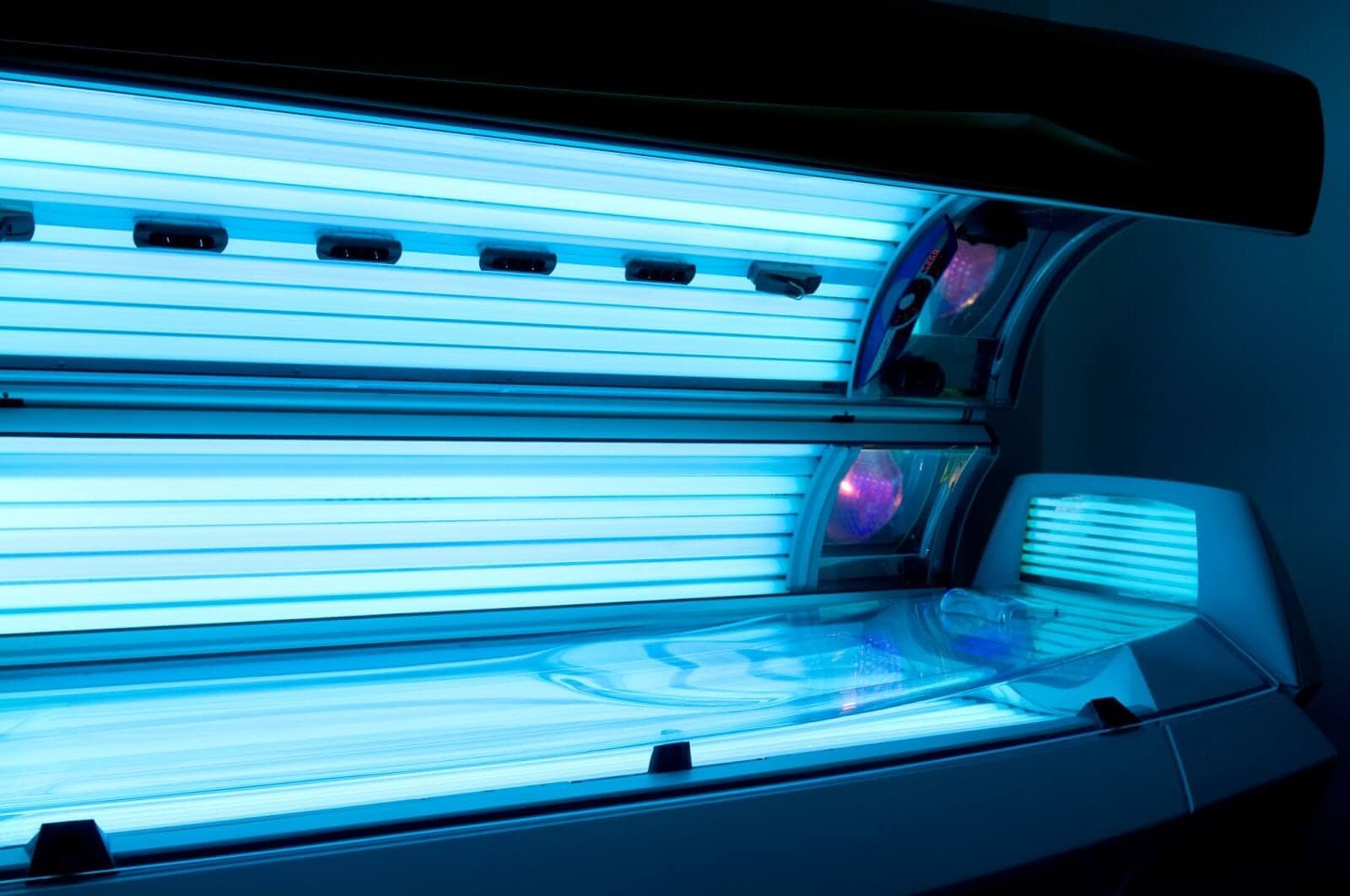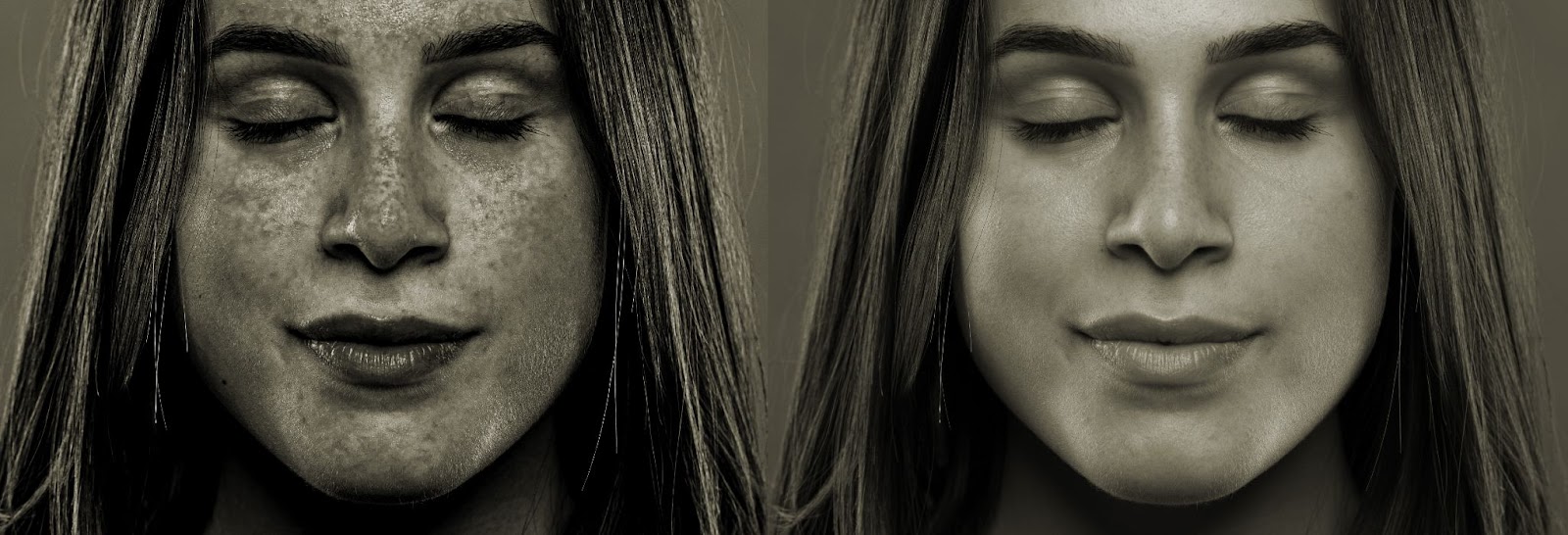Tanning Beds: Increasing your Risk of Cancer and Premature Aging
Table of Contents

Many people think that tanning beds are a great way of getting a healthy tan, but as a board-certified dermatologist, I can tell you with certainty there is no such thing. As we are in the midst of prom season and early summer, let’s take a deep dive into why tanning beds are dangerous.
What Causes Tanning?
Tanning results from your skin’s exposure to ultraviolet radiation, which comes in three variants: UVA, UVB, and UVC. The ozone layer filters out most of the UVC rays from the sun but lets UVA and UVB rays through. Both UVA and UVB rays interact with your DNA, causing premature damage and unwanted genetic changes.
In many cases, this disrupted DNA starts to form cancerous cells, ultimately resulting in skin cancer. UVB rays can only reach the top layer of skin, which is why they’re responsible for sunburn. When this happens, you’ve essentially given yourself a minor radiation burn.
Your skin uses melanin to protect itself from UV burns. When you expose your skin to increased levels of UV rays, your skin responds by producing more melanin, giving you a darker complexion.
It’s important to note that while increased melanin production prevents the red, irritated feeling of sunburned skin, it doesn’t protect the skin against UVA rays, which penetrate deep into the skin’s dermis. A tan won’t protect you against the effects of aging or the risks of developing skin cancer.
Are Tanning Beds Safe?
The short answer: No.
Longer answer: Tanning beds produce broad-spectrum UV rays, meaning that you get a dose of both UVA and UVB rays. UV rays from the sun are already damaging enough to cause skin cancer, and tanning beds produce the same intensive rays, just without the thousands of miles of distance (and ozone layer) reducing their intensity.
What Are the Risks of Indoor Tanning?
Cancer
The largest danger of using indoor tanning beds is the increased risk of skin cancer. Cancer develops due to uncontrolled cellular growth rising from extensive changes in the cell’s DNA. Ultraviolet radiation speeds up the rate of DNA mutation, making it more likely that your skin will develop actinic or solar keratoses, which often develop into melanoma, an extremely dangerous form of skin cancer.
Premature Aging
UV rays don’t just damage your DNA — they’re also responsible for destroying skin elastin, which is one of the proteins responsible for keeping your skin plump and elastic. Non-elastic skin is more likely to show folds and creases, appear papery and thin, and feel drier than usual.
While elastin can regenerate, it can take up to two years to fully restore your skin’s elasticity. Even worse, your elastin production decreases as you age, meaning that accelerating the process with tanning beds will often lead to almost irreparable damage.
Other Risks
Your skin isn’t the only part of your body affected by UV exposure. Eyes are especially prone to radiation burns, which can lead to irritation (at best) or severe eye damage and even ocular melanoma at worst.
That’s why I always recommend that people wear sunglasses with UV blockers whenever they go out. UV rays can reflect off of almost any surface, including concrete, water, snow, and sand, so it’s a good idea to wear sunglasses even when you’re not explicitly going out to tan.
Another potential health risk of excess UV exposure is immune suppression. Constant exposure to UV rays can weaken the immune system, making it easier for you to get sick. If you’ve ever wondered why you’re prone to developing cold sores after a day in the sun, UV rays are the culprit.

Are the Risks of a Tanning Bed Worse for Children and Teens?
While the risks of tanning beds aren’t worse for children and teens, I still strongly recommend against using them. The main reason is that they’re at a bigger risk over the long term, as they have a lot of life left to live. Many of the issues associated with tanning beds are due to cumulative damage. The earlier you start with tanning beds, the higher your risk of developing skin cancer in your lifetime.
What Are the Long-Term Effects of Tanning Beds?
The main long-term effect of using a tanning bed is the increased risk of melanoma or other forms of skin cancer. The more often you use the tanning bed, the higher the risk.
The other problem with tanning beds is premature skin aging. In addition to destroying your elastin, tanning beds increase your risk of hyperpigmentation. UV exposure causes a temporary increase in melanin production that subsides once the exposure stops. Most of your tan will fade away once you stop using a tanning bed, but some of the cells will stay in this hyper-melanin-producing mode, resulting in spots that never go away.
What’s surprising to many is that even one tanning bed session can increase your risk of skin cancer by up to 50%, and the effect is cumulative. The more you expose your skin to UV rays, the higher your risk.
Are there any Benefits to Using Tanning Beds?
No.
Many people hear myths about the benefits of using tanning beds. The two most common myths I hear are that you need a base tan to protect yourself from burning and that you can use a tanning bed to fight off seasonal affective disorder. Unfortunately, both aren’t true.
Base Tan to Avoid Burning
Many people believe that getting a mild tan before going on vacation will protect them against burning during their time in the sun. However, a tan doesn’t protect you against the extremely damaging properties of ultraviolet radiation that result in cancer and premature aging.
Also, getting a base tan is just as dangerous as getting any other tan. Instead, we need to cover up, use sunscreen, and take all the necessary preventative measures to protect our skin as much as possible.
You don’t need to expose your skin to UV rays to get a healthy glow. “Tans in a bottle” contain a pigment that binds to your skin’s outer layer. While finding the right self-tanner can be tricky and you may end up with a couple of uneven patches the first time you try it, it’s still a much healthier option than hitting the tanning bed.
Also, please note that using a self-tan doesn’t protect you against UV rays — these tanners don’t increase melanin production, so you’ll still need to cover up and take necessary precautions.
Provide Vitamin D to Avoid Seasonal Affective Disorder (SAD)
One of the biggest challenges for us living in Ohio is the six months of gray, dreary weather, where it feels like the sun will never return. Seasonal affective disorder (SAD) stems from a vitamin D deficiency and the depressing weather.
While it’s true that sunlight increases vitamin D production, it doesn’t mean that you need to hit up a tanning bed to get your vitamin D levels up. Your skin needs rays from the visible light spectrum, including red and blue light, to produce vitamin D, and these light rays don’t damage your skin as UV rays do.
It’s also completely possible to treat vitamin D deficiency without resorting to lightboxes of any kind. Most doctors recommend dietary supplements as the ideal way to get adequate vitamin D levels to fight off the effects of the dreary Ohio winter. These supplements are significantly more convenient, affordable, and safer than tanning beds and should be your first option when dealing with SAD.
To put it bluntly, tanning is not safe in any regard. As a dermatologist, I want to protect your skin and minimize the risk factors that lead to skin cancer. Tanning beds are simply not worth the risk, no matter how much you want that sun-kissed glow.

Protect Your Skin and Health All Year Long
At Dermatology, Surgery, and Cosmetics of Northeast Ohio, we’re here to help you and your skin stay healthy and safe. No matter the season, reach out to learn more about how dermatological care can help you be your best and healthiest all year long.
